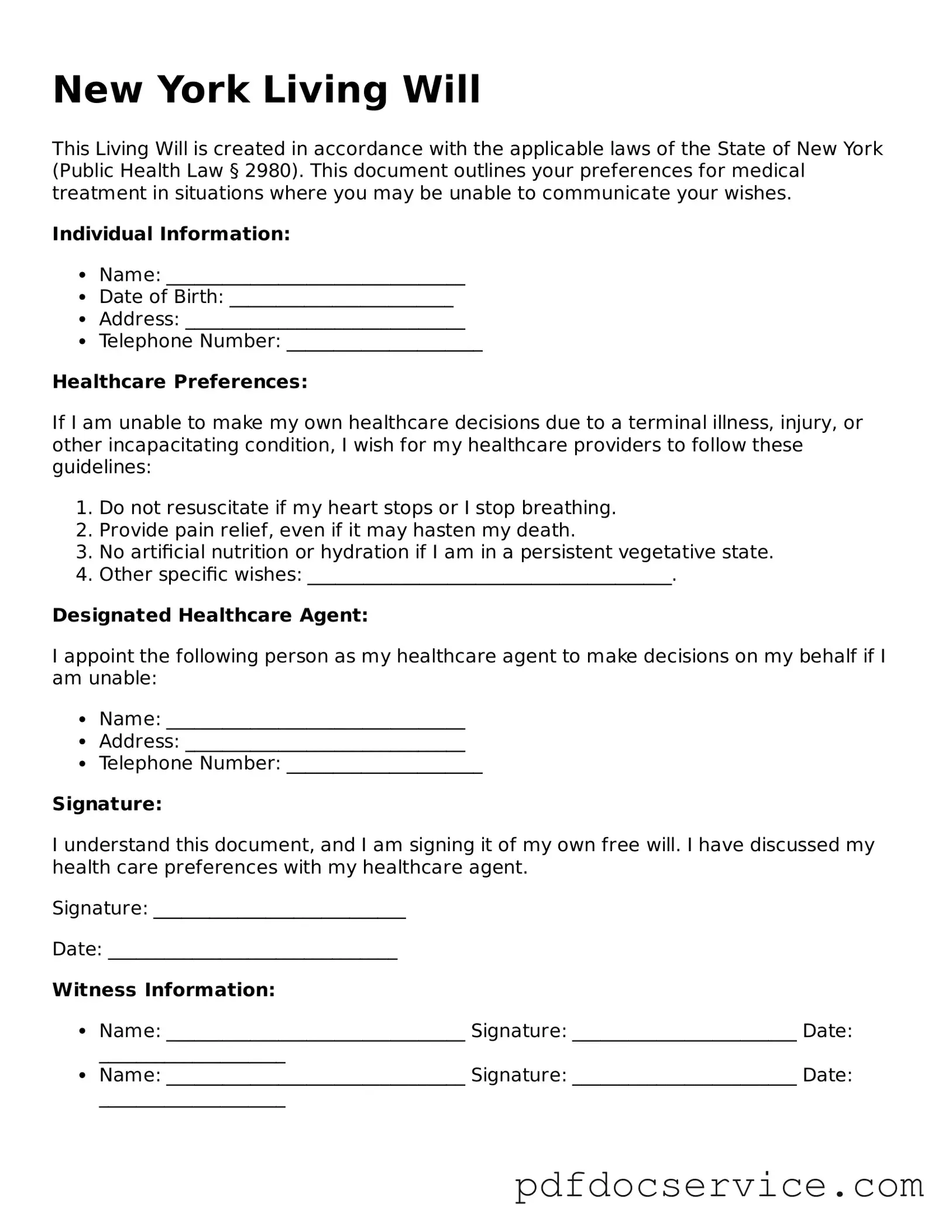What is a Living Will in New York?
A Living Will is a legal document that allows individuals to outline their preferences for medical treatment in the event they become unable to communicate their wishes. It typically addresses issues related to life-sustaining treatments, such as resuscitation and artificial nutrition. This document ensures that your healthcare choices are respected, even if you cannot express them at the time.
Who can create a Living Will in New York?
In New York, any adult who is at least 18 years old and of sound mind can create a Living Will. It is important that the individual understands the implications of the decisions they are making regarding their medical care.
What should be included in a Living Will?
A Living Will should clearly state your preferences regarding various medical treatments. Common elements to include are:
-
Your wishes regarding resuscitation efforts.
-
Your preferences for life-sustaining treatments, such as ventilators or feeding tubes.
-
Any specific instructions about pain relief and comfort care.
-
Any other personal wishes regarding end-of-life care.
How do I create a Living Will in New York?
Creating a Living Will in New York involves several steps:
-
Consider your medical preferences and end-of-life wishes.
-
Use a template or consult with a legal professional to draft the document.
-
Sign the document in the presence of at least one witness who is not a family member or a person named in the will.
-
Keep copies of the Living Will in accessible places and share them with your healthcare provider and loved ones.
Is a Living Will the same as a Health Care Proxy?
No, a Living Will and a Health Care Proxy are different documents. A Living Will specifies your medical treatment preferences, while a Health Care Proxy allows you to appoint someone to make healthcare decisions on your behalf if you are unable to do so. Many people choose to have both documents to ensure their wishes are followed.
Can I change or revoke my Living Will?
Yes, you can change or revoke your Living Will at any time, as long as you are of sound mind. To revoke the document, you can simply destroy it or create a new Living Will that states your updated wishes. It is advisable to inform your healthcare provider and anyone who has a copy of your previous Living Will about the changes.
Do I need a lawyer to create a Living Will?
While it is not legally required to have a lawyer to create a Living Will in New York, consulting one can be beneficial. A legal professional can help ensure that the document meets all legal requirements and accurately reflects your wishes. However, many templates are available that can guide you through the process without legal assistance.
How does a Living Will affect my medical care?
A Living Will provides guidance to healthcare providers about your treatment preferences. In situations where you cannot communicate, medical staff will refer to your Living Will to make decisions in accordance with your stated wishes. This document helps to avoid confusion and ensures that your preferences are honored.
Is a Living Will legally binding in New York?
Yes, a properly executed Living Will is legally binding in New York. Healthcare providers are required to follow the instructions outlined in the document, as long as they are consistent with state laws. It is important to ensure that your Living Will is clear and unambiguous to avoid any potential disputes.
Where should I keep my Living Will?
Store your Living Will in a safe but accessible place. It is advisable to keep copies in locations where they can be easily retrieved, such as with your healthcare provider, in your medical records, or with trusted family members. Make sure to inform those close to you about the location of the document so they can access it when needed.
